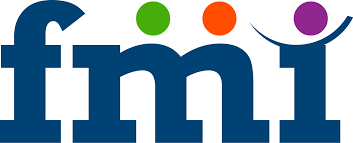The cosmetic jars market is a rapidly growing industry that offers packaging solutions for a wide range of cosmetic products. Cosmetic jars are widely used for the storage and packaging of a variety of cosmetic products, such as creams, lotions, moisturizers, and other beauty products. The cosmetic jars market offers a wide range of options, including different sizes, shapes, materials, and closures, to meet the diverse needs of consumers and manufacturers.
By 2022, the market for cosmetic jars is expected to be worth US$ 4.1 billion. By 2032, the market will be worth US$ 6.7 Bn, with demand increasing at a 4.9% CAGR. In 2022, the top 3 countries' combined cosmetic jar sales are anticipated to account for 30–35% of the global cosmetic jar market.
One of the major drivers of the cosmetic jars market is the increasing demand for cosmetic products worldwide. As consumers become more conscious about their appearance, the demand for high-quality and effective cosmetic products is on the rise. This has led to the growth of the cosmetic jars market, as manufacturers are looking for innovative packaging solutions to differentiate their products from competitors.
For More Insights on this Market, Get A Sample Report https://www.futuremarketinsights.com/reports/sample/rep-gb-14618
Another key factor driving the cosmetic jars market is the growing trend towards sustainable packaging solutions. Consumers are increasingly looking for eco-friendly products that are made from sustainable materials and are easily recyclable. This has led to the development of new materials for cosmetic jars, such as bioplastics and other sustainable options. Manufacturers are also exploring new ways to reduce the environmental impact of their packaging, such as using renewable energy sources and implementing recycling programs.
The cosmetic jars market is also benefiting from the increasing popularity of online sales channels. With the growth of e-commerce, consumers are increasingly purchasing cosmetic products online. This has led to a higher demand for cosmetic jars that are easy to use and transport, such as travel-sized jars and jars with convenient closures. Manufacturers are also exploring new ways to improve the online shopping experience for customers, such as offering customizable packaging options and personalized labeling.
In terms of materials, the cosmetic jars market offers a wide range of options, including glass, plastic, metal, and ceramic. Glass jars are popular for their high-end appearance and durability, while plastic jars are popular for their lightweight and affordability. Metal and ceramic jars are also popular for their durability and aesthetic appeal. Manufacturers are also exploring new materials for cosmetic jars, such as biodegradable and compostable materials, to meet the growing demand for sustainable packaging solutions.
In terms of closures, the cosmetic jars market offers a variety of options, including screw caps, snap-on caps, flip-top caps, and pump dispensers. Manufacturers are also exploring new closure options, such as airless pumps and dropper caps, to meet the evolving needs of consumers.
Geographically, the cosmetic jars market is segmented into North America, Europe, Asia Pacific, Latin America, and the Middle East and Africa. Asia Pacific is the largest market for cosmetic jars, due to the high demand for cosmetic products in countries such as China, Japan, and India. North America and Europe are also significant markets for cosmetic jars, due to the high disposable income and strong consumer demand for cosmetic products.
Overall, the cosmetic jars market is a rapidly growing industry that offers a wide range of packaging solutions for cosmetic products. With the increasing demand for sustainable packaging options and the growth of online sales channels, the cosmetic jars market is expected to continue to expand in the coming years.

